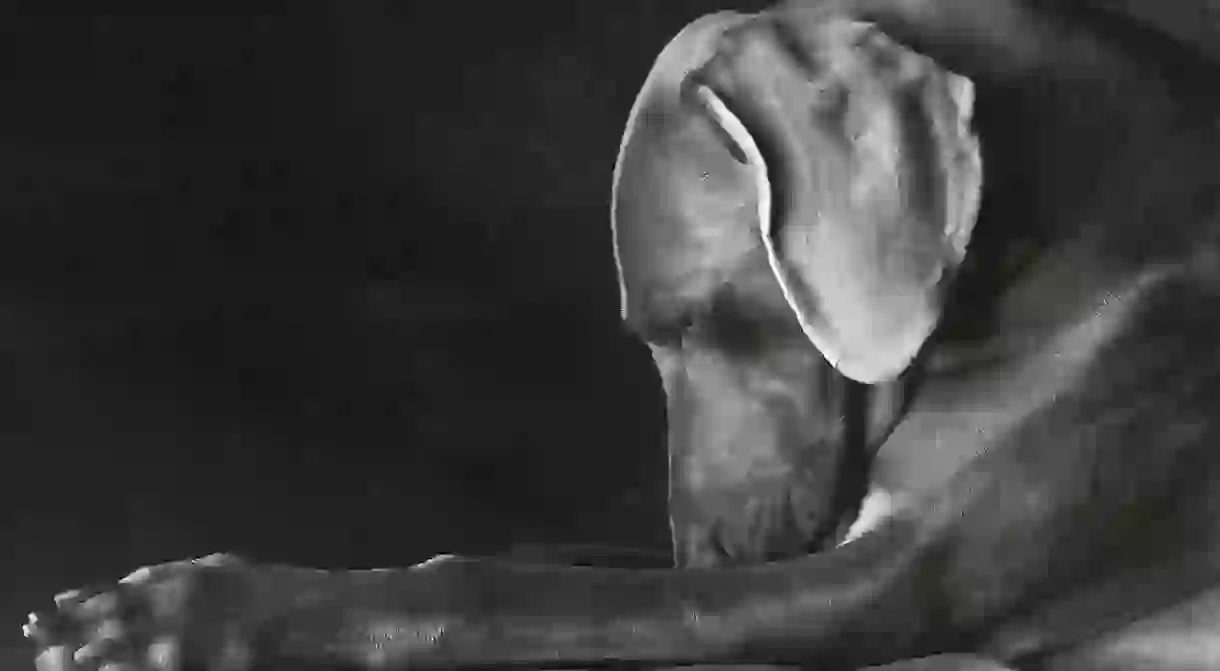In 400 Photographs, a New Book Captures the Joys of Canine Companionship

Taschen’s latest tome exemplifies how dogs have long been our sincerest companions—and they certainly know how to work it for the camera.
Collector, museum trustee, and photography patron Raymond Merritt’s compilation of over 400 photographs from 1839 to the present day is both a rare examination of the dog as a photographic subject, and a monumental tribute to the history of a timeless pairing.

The Dog in Photography explores but a sample of the innumerable relationships humans have had with their dogs over the last two centuries, with a stunning showcase of snapshots by world-famous photographers including Man Ray, Eric Fischl, Wolfgang Tillmans, and, of course, William Wegman. In turn, Queen Victoria, John F. Kennedy, Audrey Hepburn, and Elizabeth Taylor are among the iconic figures exhibited with their loving hounds in front of the lens.
Accompanying the photographs are poems by the likes of Walt Whitman, Edith Wharton, and Rudyard Kipling. Corresponding essays explore the relationships formed between dogs and their human caretakers, as well as the history of dogs in photography.

In 1839, Louis-Jacques Mandé and Joseph Nicéphore Niépce—both French, the first an artist, the latter, a chemist—popularized photography in its primal format: the daguerreotype, “a process by which light-induced images were fixed permanently on a plate,” according to a chapter in The Dog in Photography titled “Catching the Sun—Seeing the Light: from Portraiture to Pictorialism.”
At around the same time, an Englishman by the name of William Henry Fox Talbot invented the “talbotype,” also known as the “calotype,” by which “unlimited paper positives [could be derived] from a single paper negative.” This would serve as the foundation of modern photography.

Thus the book’s timeline begins that very year, when Queen Victoria ruled England along with much of the world beyond Britain’s borders. A formidable and visionary ruler, Victoria led her people into a new age of industry and globalization. The Queen was an avid supporter of photography as a technological marvel and, with her patronage, it became an important method for documenting the world (and its resident pups) like never before.
A mid-19th-century image of a dog’s gravestone, rendered by Talbot himself, is credited as the world’s first canine photograph. Early photographic processes were too slow to capture squirmy (living) animals, but the public’s desire to memorialize their pets created high demand for the cutting-edge technology to do so. As soon as it became available, the field exploded with all manner of dog photos: some proud, others silly, but all adoring.

Fast forward to the 20th century when photography was integrated into the visual avant-garde, and dogs transformed from passive, lowly creatures in need of human mercy into empowered subjects with a “social conscience” all their own, as Merritt notes.
In the 1970s, William Wegman’s brand of conceptualism placed dogs—particularly, the Weimaraner—in a unique light as the autonomous subject. “Collaborat[ing] with them to ridicule the ignobility of man,” Merritt writes, Wegman’s Weimaraners are humorous yet soulful creatures worthy of the human gaze.

“Wegman once commented that dogs make us feel better, and they do,” reads the chapter titled “Closing the Circle: From Acceptance to Absorption.” It goes on: “They often become true soul mates. They manifest whimsy, evoke pathos, and exude elegance. And perhaps for these reasons, the dog remains a recurrent metaphor and symbol for the contemporary artist.”
Through a heartwarming breadth of images, The Dog in Photography presents the pup’s unspoken narrative throughout the centuries. It underscores the ways in which dogs provide their human companions with a profound kind of love, and in doing so, teach us how to love in return.

“From the 19th century right through to today, we see how the camera has been the key witness to our abiding affection for dogs, capturing their beauty, character, joy, and abiding friendship,” explains Taschen. And these photographs “are testimony if ever there was one that dogs are not only best friends, but also pure photographic inspiration.”
The Dog in Photography will be available for purchase in May 2018.













